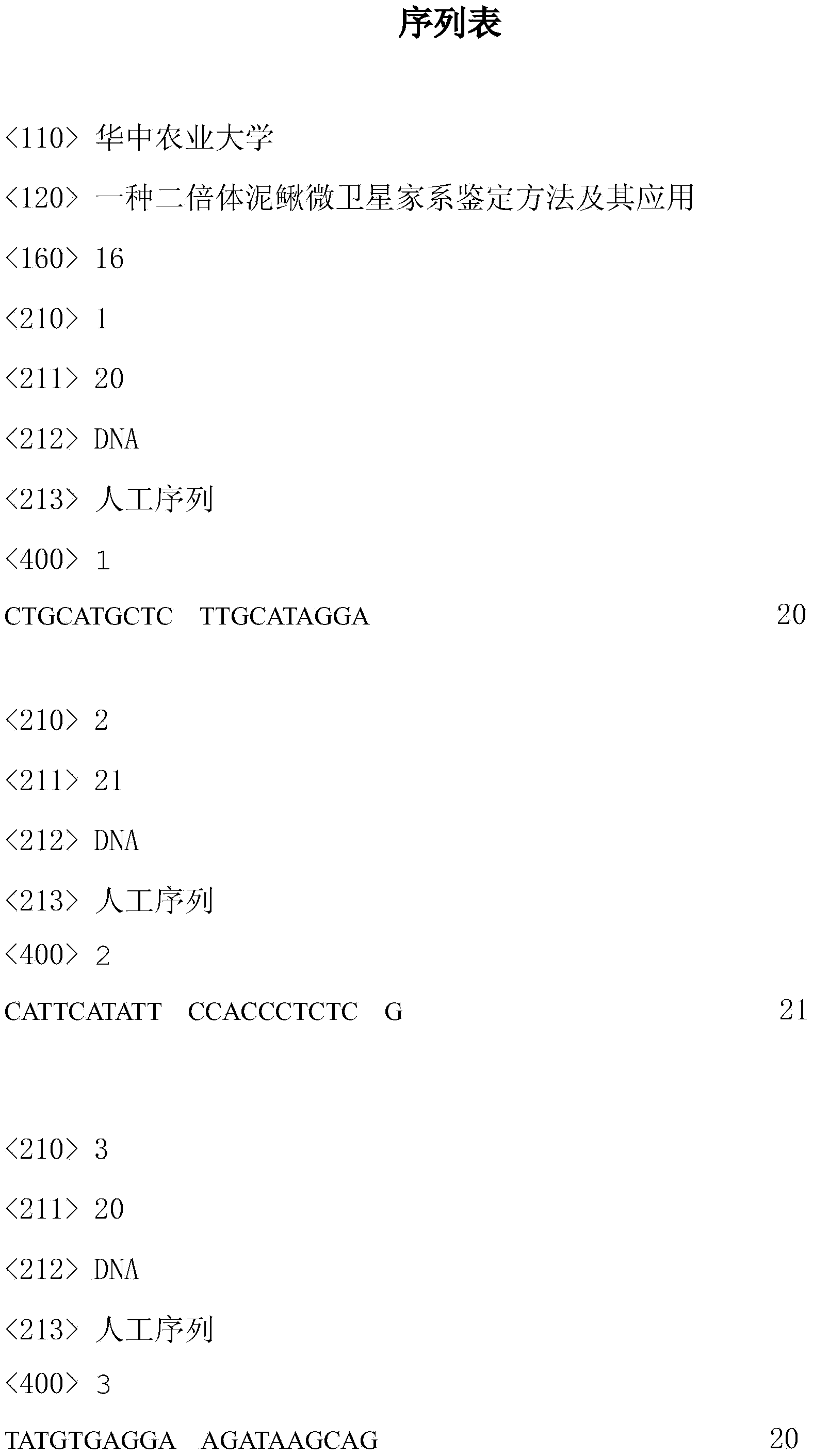Microsatellite family identifying method for diploid misgurnus anguillicaudatus and application of method
An identification method and a diploid technology, which are used in the determination/inspection of microorganisms, biochemical equipment and methods, and resistance to vector-borne diseases, etc., can solve the problems such as microsatellite markers that have not yet been seen, and achieve stable and reliable PCR products Accelerates the acquisition of a large number of effects
- Summary
- Abstract
- Description
- Claims
- Application Information
AI Technical Summary
Problems solved by technology
Method used
Image
Examples
Embodiment 1
[0026] 1) Loach ploidy detection and family establishment
[0027] Wild loach parents were collected from three provinces of Hunan, Hubei and Henan, ploidy was determined by flow cytometry, and 20 diploid loach males and females were selected for artificial induced breeding. The ratio of male to female was 1:1, and 20 full-sib families were established. . The fin ray tissues of the parents of each family were clipped and placed in absolute ethanol, and the family information was recorded and stored at -20°C for later use. 20 families were placed in 20 plastic water tanks for separate breeding. After the fry hatched for 20 days, 25-30 fish were randomly selected from each family, fixed with absolute ethanol, and used as samples for family identification.
[0028] 2) Genomic DNA extraction of loach parents and offspring;
[0029] Put the fin ray tissue of each parent and the whole fish (head and viscera) of each offspring into a 2ml centrifuge tube, cut the tissue into pieces ...
PUM
 Login to View More
Login to View More Abstract
Description
Claims
Application Information
 Login to View More
Login to View More - R&D
- Intellectual Property
- Life Sciences
- Materials
- Tech Scout
- Unparalleled Data Quality
- Higher Quality Content
- 60% Fewer Hallucinations
Browse by: Latest US Patents, China's latest patents, Technical Efficacy Thesaurus, Application Domain, Technology Topic, Popular Technical Reports.
© 2025 PatSnap. All rights reserved.Legal|Privacy policy|Modern Slavery Act Transparency Statement|Sitemap|About US| Contact US: help@patsnap.com



